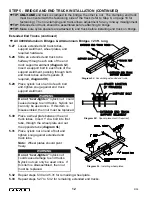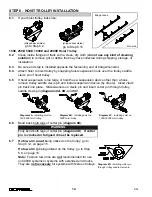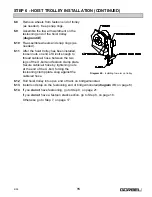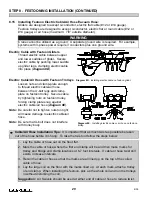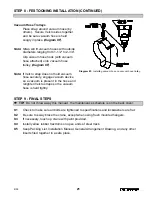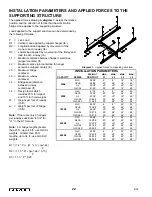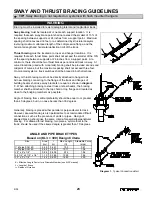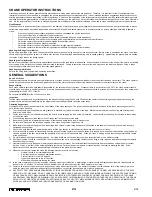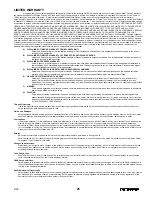
SWAY AND THRUST BRACING GUIDELINES
Sway bracing
must be located at or near each support location. It is
required that each sway brace point shall not exceed the smaller of 10% of
the spacing between supports or 24 inches from a support point. Maximum
spacing shall not exceed 30 feet or as determined by structural analysis
involving maximum unbraced length of the compression flange, and the
horizontal length and horizontal deflection limit of the track.
Thrust bracing
must be located at or near end hanger locations. It is
required that each thrust brace point shall not exceed the smaller of the 10%
of the spacing between supports or 24 inches from a support point. At a
minimum, there should be two thrust braces per enclosed track runway. At
curved locations (used with monorails) bracing shall be provided at ends and
midpoint of curves, but the maximum spacing shall not exceed three feet.
On monorail systems, track switches shall be braced in both directions.
Sway or thrust bracing must not be directly attached to hanger rods.
All new bracing connecting to the flange of the track and flanges of
building beams shall use sway brackets or equal as shown in
diagram
1
. When attaching bracing to steel truss or steel beams, the bracing
member shall be attached to the top chord or top flange and located as
close to the bridging members as possible.
Angle of bracing from vertical preferably should be equal to or greater
than 45 degrees, but in no case be less than 30 degrees.
Generally, bracing is placed either parallel or perpendicular to track.
However, skewed bracing is also permissible to accommodate difficult
connections, such as the presence of ducts or pipes. Design of
skewed bracing should use the same criteria for parallel/perpendicular
bracing. For skewed thrust bracing, two pieces, symmetrical to the
track, should be used if the skewed angle is greater than 10 degrees.
TIP:
Sway bracing is not required on systems with flush mounted hangers.
WARNING
Bracing must be installed to resist damaging lateral and longitudinal loads.
Diagram 1.
Typical Connection detail.
23
9/05
Æ
K = Effective Length Factor for a Prismatic Member (see AISC manual)
L = Length of Brace
r = Radius of Gyration
Size
1” Ø pipe SCH 40
1” Ø pipe SCH 80
L 2” x 2” x 1/4”
L 2 1/2” x 2 1/2” x 1/4”
L 3” x 3” x 1/4”
Area
(in
2
)
0.49
0.64
0.94
1.19
1.44
r
(in)
0.421
0.407
0.609
0.769
0.930
Max. Length
(ft)
10.5
10.17
9.75
12.28
14.80
Allowable Force
(kips)
0.81
1.06
1.56
1.98
2.39
ANGLE AND PIPE BRACE TYPES
Based on (KL/r = 300) Design Criteria
Summary of Contents for AL 1000
Page 1: ......




